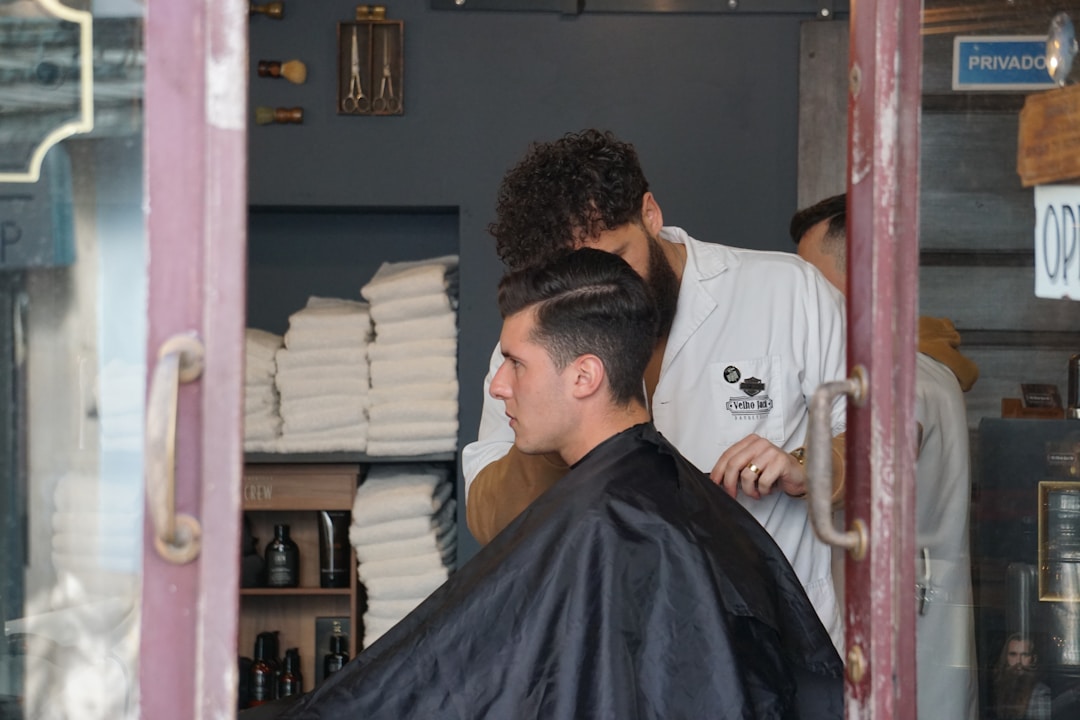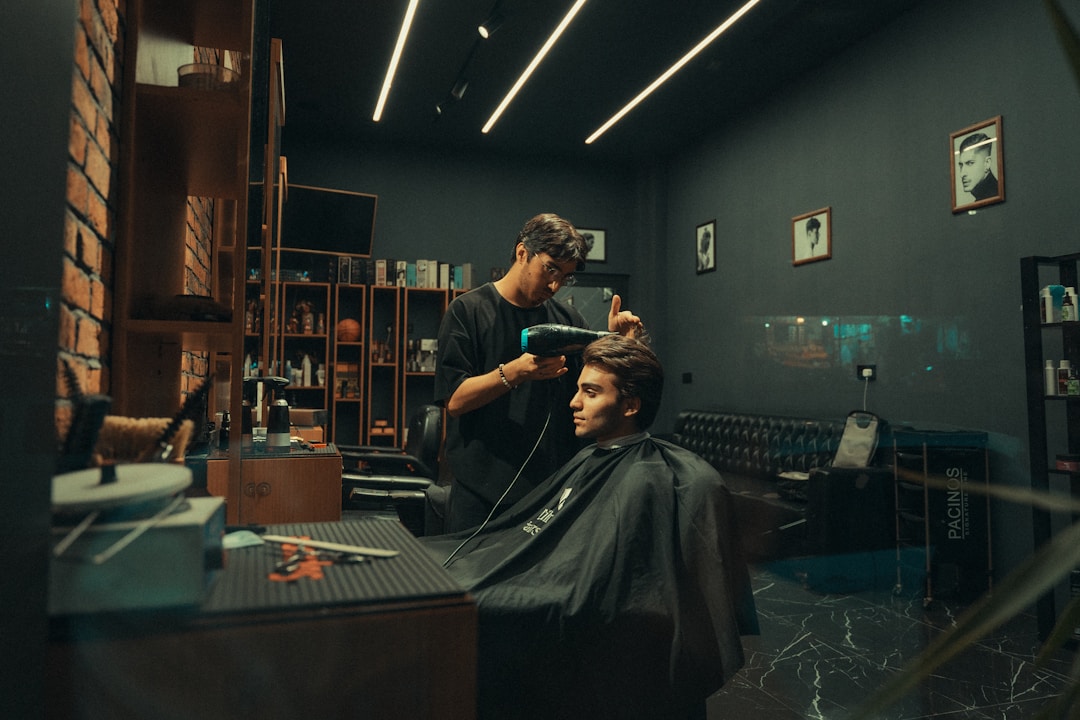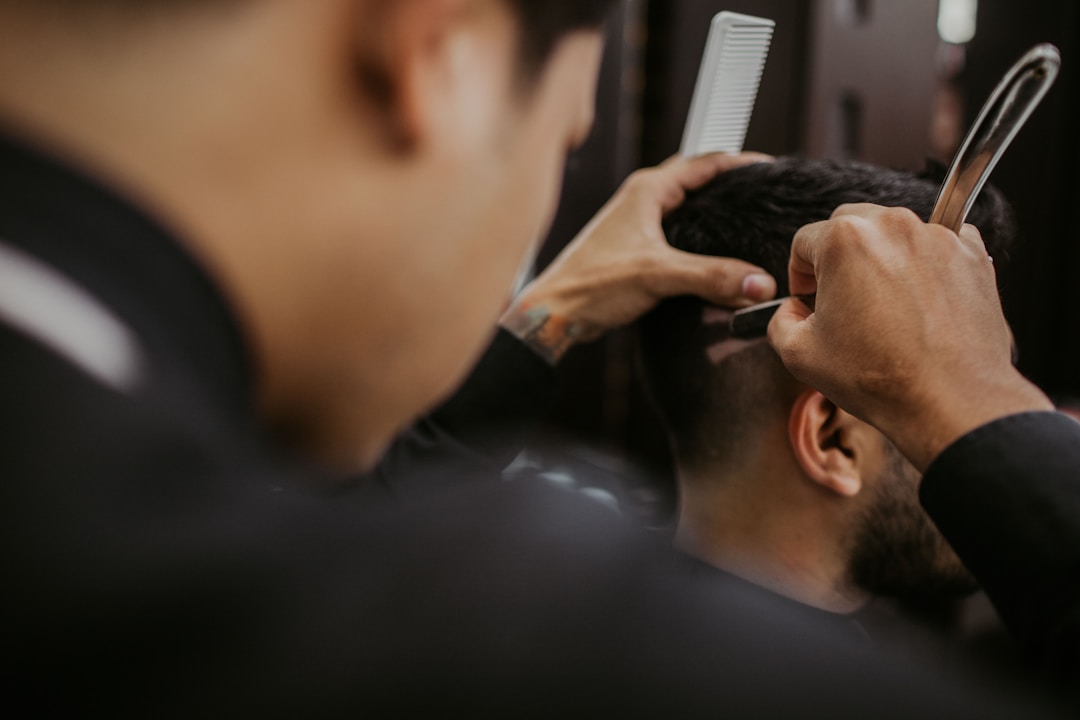Low Fade Haircut for Asian Hair (Thick): Complete Guide 2025
Master low fade haircuts for Asian men with thick hair. Specialized cutting techniques, styling methods, density management, and product recommendations from Queens NYC professional barbers.

Asian men with thick hair possess a natural advantage when it comes to low fade haircuts. The high density, straight texture, and strong shaft structure of thick Asian hair creates clean, defined fade transitions with excellent visual impact. This hair type holds shape exceptionally well, supports substantial styling variety, and showcases the precision of expert barbering beautifully.
However, maximizing the potential of thick Asian hair requires understanding its unique characteristics - high density that can create bulk, straight texture that shows every cut clearly, and rapid growth that affects fade longevity. This complete guide covers specialized techniques for cutting, styling, and maintaining low fade haircuts optimized specifically for thick Asian hair.
Understanding Thick Asian Hair Characteristics
Thick Asian hair has distinct biological characteristics that differentiate it from other hair types. Understanding these traits allows barbers to employ techniques that work with the hair's natural properties rather than against them.
1. High Individual Strand Diameter
Asian hair strands are typically 50-100 microns in diameter, compared to 40-60 microns for Caucasian hair. This creates stronger, more resilient individual hairs.
Impact: Hair holds shape excellently but requires proper texturizing to avoid bulky appearance
2. Extremely High Density
Thick Asian hair often has 80,000-150,000+ follicles, significantly higher than average. Combined with thick strands, this creates substantial volume and weight.
Impact: Excellent fullness on top, but requires strategic thinning to prevent "mushroom" silhouettes
3. Perfectly Straight Structure
Most thick Asian hair is Type 1a (perfectly straight) with round cross-section. Hair grows directly outward and downward without natural curve or wave.
Impact: Creates clean fade lines, shows all cutting imperfections clearly, requires product for texture or movement
4. Fast Growth Rate
Asian hair typically grows 1.3-1.5 cm per month, faster than other hair types. Growth is uniform and noticeable quickly.
Impact: Fades lose definition rapidly, requiring maintenance every 2-3 weeks for optimal appearance
5. Strong, Resilient Texture
The thick, round shaft structure makes Asian hair more resistant to breakage and damage. Hair maintains integrity even with frequent cutting and styling.
Impact: Excellent for maintaining styles, supports longer lengths on top, tolerates heat styling well
6. Tendency to Stack and Build
The straight growth pattern causes hair to naturally stack on itself, creating triangular or boxy shapes without proper technique.
Impact: Requires expert blending and texturizing to create tapered, proportionate shapes
Professional Insight: The combination of high density and thick individual strands means Asian hair can support 3-6 inches of length on top without losing structure - a significant advantage for dramatic, voluminous styles that would fall flat with finer hair types.
Best Low Fade Styles for Thick Asian Hair
Thick Asian hair's natural strength and density enable a wide range of low fade styles. These looks use the hair's structural advantages while managing bulk through strategic cutting and styling.
Textured Crop with Low Fade
Best For: Modern versatility, casual-to-professional settings | Top Length: 1.5-3 inches
This contemporary style features short to medium length on top with heavy texturing for movement and separation. The low fade creates clean sides while the textured top prevents the heavy, blunt appearance thick hair can have when cut uniformly.
Styling: Apply matte clay to damp hair, work through with fingers for separation, style forward or to side. The natural thickness holds texture without additional products.
Low Fade with Classic Side Part
Best For: Professional environments, formal occasions | Top Length: 2-4 inches
A timeless, sophisticated style that showcases thick Asian hair's natural ability to hold structured shapes. The defined part creates elegant separation while the low fade maintains contemporary edge. The hair's thickness ensures the style stays in place all day.
Styling: Apply medium-hold pomade to damp hair, create sharp side part with comb, brush to side. The thickness prevents the slicked-down appearance possible with finer hair.
Korean-Style Low Fade with Fringe
Cultural Relevance: K-pop influenced, youth appeal | Top Length: 3-5 inches (longer in front)
Inspired by Korean men's fashion, this style features longer hair brushed forward into a face-framing fringe with a low fade on sides. The thickness supports substantial length without limpness, creating the signature voluminous look of K-pop styling.
Styling: Blow-dry forward with round brush for volume, apply light styling cream, arrange fringe with fingers. Consider semi-permanent styling for wave or curl if desired.
Low Drop Fade with Volume on Top
Best For: Bold statements, maximum impact | Top Length: 3-6 inches
A dramatic style that maximizes thick Asian hair's natural volume. The low drop fade curves behind the ear, creating strong contrast with substantial length and height on top. The thickness prevents collapse, maintaining impressive height throughout the day.
Styling: Blow-dry upward and back with volumizing mousse, use strong-hold pomade or wax to create lift, finish with hairspray for all-day hold.
Disconnected Low Fade with Length
Best For: Fashion-forward, contemporary edge | Top Length: 4-6 inches
This avant-garde style features an abrupt disconnect between the low fade and longer top without gradual blending. The bold contrast emphasizes thick hair's structural integrity and creates striking visual separation. Requires confidence to pull off effectively.
Styling: Style top in any direction - slicked back, textured, or swept to side. The disconnect amplifies the drama of whatever top styling you choose.
Specialized Cutting Techniques for Thick Asian Hair

Cutting thick Asian hair for low fades requires specialized approaches that manage density while creating clean, proportionate shapes. These techniques prevent bulk while preserving the hair's natural fullness.
Strategic Density Reduction
Managing Bulk Without Losing Fullness
The primary challenge with thick Asian hair is maintaining desired volume while preventing overwhelming bulk. Professional barbers use thinning techniques that create movement and reduce weight without making hair appear sparse or over-processed.
Thinning Shear Techniques
Using thinning shears (texturizing scissors) to remove internal weight. Typically remove 20-40% of bulk in dense areas while maintaining external appearance. Target mid-shaft to ends, avoiding roots to preserve volume.
Point Cutting for Texture
Cutting into hair ends at angles rather than straight across creates natural texture and reduces visual weight. Essential for preventing blunt, heavy appearance characteristic of thick straight hair.
Internal Layering
Creating invisible interior layers that reduce stacking. Removes weight from beneath while keeping surface length intact, preventing the triangular "mushroom" silhouette.
Fade Execution for High Density Hair
Clean Blending Through Dense Hair
Thick Asian hair requires multiple blending passes and careful technique to achieve smooth fade gradients. The density means more hair to cut through in each pass, requiring patience and precision.
Professional Fade Process:
- Establish guideline with precise measurement (typically 1-2 inches above ear for low fade)
- Initial fade with standard guard progression (#0.5 → #1 → #2 → #3), making multiple passes
- Open blade work between guard lengths to eliminate visible lines thick hair can show
- Clipper-over-comb blending in transition zone where fade meets longer length
- Detail work with trimmers for ultra-clean edges and hairline definition
- Multiple angle checks to ensure uniform appearance from all viewing positions
Preventing Common Thick Hair Issues
Avoiding Stacking and Bulk Problems
Addressing the "Mushroom" Effect
When thick hair is cut uniformly, it creates a rounded, mushroom-like silhouette. Solution: Use point cutting on perimeter, internal layering for shape, and strategic thinning to create tapered appearance.
Managing Vertical Stacking
Thick straight hair tends to stack vertically, creating boxy shapes. Solution: Cut hair at slight angles rather than perfectly horizontal, use graduation techniques to create flow and movement.
Balancing Top-to-Side Proportions
The low fade creates dramatic contrast that can make thick top hair appear disproportionate. Solution: Adjust top length and density based on fade placement, ensuring balanced overall silhouette.
Styling Products and Techniques for Thick Asian Hair
Thick Asian hair's strength and structure mean it requires stronger-hold products than finer hair types. The goal is managing the hair's natural tendency to hold shape while adding desired texture or movement.
| Desired Look | Product Type | Hold Strength |
|---|---|---|
| Slicked Formal Style | Strong-Hold Pomade | High (8-10/10) |
| Textured Casual | Matte Clay/Fiber | Medium-Strong (6-8/10) |
| Volume & Height | Hair Wax or Paste | Medium (5-7/10) |
| Natural Flowing | Light Styling Cream | Light-Medium (3-5/10) |
| Texture & Separation | Sea Salt Spray | Light (2-4/10) |
| Pre-Style Volume | Volumizing Mousse | N/A (foundation) |
Daily Styling Routine
Morning Styling Process (7-10 minutes)
- Wash or dampen hair thoroughly (thick hair requires complete saturation)
- Towel dry partially leaving hair damp but not dripping
- Apply pre-styler if using (volumizing mousse for lift, sea salt spray for texture)
- Blow-dry strategically - thick hair benefits significantly from blow-drying with directional styling
- Apply styling product to dry or slightly damp hair (amount depends on product - start with dime-sized portion)
- Work through hair with hands, comb, or brush depending on desired finish
- Final shaping with additional product if needed (thick hair typically needs less than expected)
- Optional hairspray for maximum hold in formal situations
Pro Tips for Thick Asian Hair Styling
- Less Product Than Expected: Thick hair's structure means it holds shape naturally. Start with minimal product and add as needed.
- Blow-Dry for Direction: Thick Asian hair benefits enormously from blow-drying in desired direction - creates foundation for style.
- Emulsify Products First: Rub product between palms until warm and broken down before application for even distribution.
- Style Damp, Not Wet: Styling very wet thick hair can result in product dilution and reduced hold. Towel dry first.
- Finish with Minimal Touching: Once styled, avoid excessive touching - thick hair holds initial styling well and benefits from being left alone.
Maintenance Schedule for Thick Asian Hair Low Fades

Thick Asian hair's fast growth rate and high density mean consistent professional maintenance is essential. The combination of rapid growth and visible straight texture makes fade degradation obvious relatively quickly.
| Frequency | Service | Why It Matters |
|---|---|---|
| Daily | Styling routine, product application | Maintains desired shape and appearance |
| Every 2-3 Days | Shampooing (adjust based on oiliness) | Thick hair can go longer between washes |
| Every 2 Weeks | Professional fade refresh (optimal) | Maintains crisp definition and clean edges |
| Every 3 Weeks | Fade refresh (acceptable) | Still presentable but less sharp than 2-week refresh |
| Every 4-6 Weeks | Full haircut with top length adjustment | Manages bulk, reestablishes shape and proportions |
Growth Rate Reality: Thick Asian hair grows approximately 1.3-1.5 cm monthly (faster than most other hair types). This means 2-week maintenance provides 6.5-7.5mm of growth, while 3-week maintenance shows 9.75-11.25mm - enough to significantly impact fade definition.
Common Mistakes with Thick Asian Hair Low Fades
❌ Not Requesting Texturizing
The Problem: Cutting thick Asian hair uniformly creates heavy, blunt appearance without movement or dimension.
Solution: Always request point cutting, texturizing, or thinning techniques. Specify "texture, not bulk" to your barber.
❌ Using Too Much Product
The Problem: Thick hair holds shape naturally. Over-application makes hair look greasy, stiff, or unnatural.
Solution: Start with dime-sized amount of product. Add incrementally only if needed. Thick hair requires less than you think.
❌ Waiting Too Long Between Maintenance
The Problem: Fast-growing thick hair loses fade definition quickly. Waiting 4+ weeks creates noticeably overgrown appearance.
Solution: Commit to 2-3 week maintenance schedule. Book next appointment before leaving barbershop.
❌ Skipping Blow-Drying
The Problem: Air-drying thick straight hair results in flat, directionless style without intended shape or volume.
Solution: Invest 5 minutes in blow-drying with directional styling. This creates foundation for all styling and dramatically improves results.
❌ Choosing Inappropriate Barbers
The Problem: Barbers unfamiliar with thick Asian hair may use techniques appropriate for finer hair, resulting in poor outcomes.
Solution: Seek barbers with demonstrated experience cutting Asian hair. Look for portfolios showing thick hair transformations.
Related Low Fade Resources
Frequently Asked Questions
Expert Low Fade Haircuts for Thick Asian Hair
Visit DIDA Hair Studio in Queens, NYC for professional low fade haircuts optimized for thick Asian hair. Our experienced barbers specialize in density management, texturizing techniques, and creating balanced, proportionate styles that showcase your hair's natural advantages.